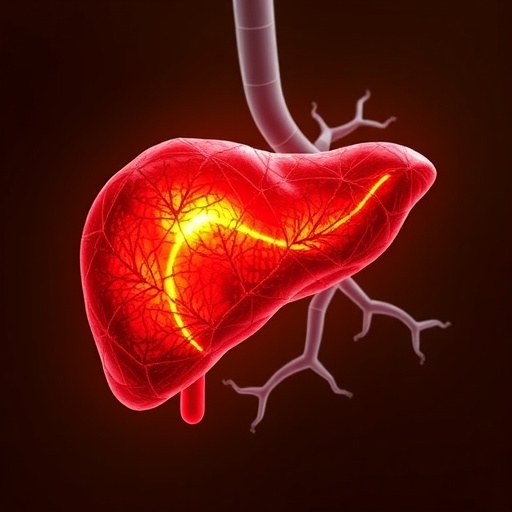
Scientists have uncovered a groundbreaking approach to halting the spread of glioblastoma, the deadliest and most aggressive form of brain cancer. This novel method centers around chemically stabilizing a key molecule in the brainâs extracellular matrix, effectively âfreezingâ its molecular structure to prevent cancer cells from invading surrounding tissues. By targeting this fundamental aspect of the tumor microenvironment, researchers are shifting the paradigm from directly attacking cancer cells to manipulating their physical niche, opening exciting avenues for future therapeutic interventions.
Glioblastoma, notorious for its invasiveness and poor prognosis, has long posed a formidable challenge to oncologists and neuroscientists alike. The conventional strategies involving surgical excision, radiation, and chemotherapy offer limited long-term success, with a grim five-year survival rate lingering around 15 percent. Despite aggressive treatment, glioblastoma cells frequently infiltrate healthy brain tissue, enabling rapid tumor regrowth. The failure of existing drugs to effectively penetrate tumor masses and the resilience of cancer cells underscore the urgent need for innovative therapeutic approaches that address not only the cells but also their immediate environment.
Central to the Cambridge study is hyaluronic acid (HA), a naturally occurring polysaccharide abundant in the brainâs extracellular matrix. HA forms a critical scaffold that provides structural support and modulates cellular behavior. The research team revealed that the intrinsic molecular flexibility of HA molecules is essential for glioblastoma cell invasion. This flexibility allows HA to adopt conformations that bind to CD44, a receptor expressed on the surface of cancer cells, which in turn triggers signaling pathways promoting motility and invasion. The dynamic interplay between HA and CD44 orchestrates the malignant spread characteristic of glioblastoma.
Employing advanced nuclear magnetic resonance (NMR) spectroscopy, the researchers meticulously analyzed the conformational states of HA molecules. They discovered that when HAâs molecular flexibility is chemically restrictedâachieved through cross-linking that âfreezesâ its shapeâthe ability of HA to engage CD44 is dramatically diminished. This inhibition effectively reprograms glioblastoma cells into a dormant, non-invasive state without inducing cell death. Unlike traditional cytotoxic therapies, this approach leverages changes in the tumor microenvironment to modulate cellular behavior, offering potential for therapies with fewer side effects and reduced resistance.
The implications of this finding are profound. By stabilizing HA, the extracellular matrix transitions from a permissive to a restrictive environment, curtailing the spread of cancer cells throughout brain tissue. This strategy directly addresses one of the key challenges in glioblastoma treatment: the diffuse infiltration of tumor cells into healthy brain regions that are beyond the reach of surgical removal or systemic chemotherapy. By arresting invasion at the molecular level, this matrix-based therapy may substantially delay or even prevent tumor recurrence.
Importantly, the research indicates that these effects occur at relatively low concentrations of HA, suggesting that physical entrapment of cancer cells is not the primary mechanism. Instead, the biochemical signaling cascade between HA and CD44 is disrupted, leading to alterations in cell motility and gene expression that favor dormancy. This nuanced understanding of tumor biology underscores the complexity of the tumor microenvironment and highlights how physical and biochemical factors integrate to regulate malignancy.
The study also sheds light on the perplexing phenomenon of glioblastoma recurrence at surgical sites. Postoperative edemaâthe accumulation of fluidâcan dilute and increase the flexibility of HA, inadvertently restoring the moleculeâs ability to bind CD44 and promote invasion. By applying HA-stabilizing agents at or near surgical sites, it may be possible to mitigate this risk, offering a means to extend remission times and improve patient outcomes.
This innovative approach opens the door not only for glioblastoma but also for a broader range of solid tumors where the extracellular matrix plays a pivotal role in cancer progression. Many invasive cancers exploit their microenvironment to escape immune surveillance and therapeutic agents. By focusing on altering the mechanical and chemical properties of the matrix, new classes of anti-invasive therapies could emerge, potentially applicable across oncology.
Professor Melinda Duer, who spearheaded this research at the Yusuf Hamied Department of Chemistry at the University of Cambridge, emphasized the groundbreaking nature of this work: âOur results provide the first compelling evidence that reprogramming cancer cells by targeting the matrix rather than the cells themselves is feasible. We have demonstrated that cancer cell behavior can be fundamentally altered by controlling the flexibility of hyaluronic acid, halting their invasive capability without toxicity.â This paradigm shift in cancer treatment underscores the significance of the microenvironment in oncogenesis.
Further studies are planned to validate these findings in animal models, an essential step before contemplating clinical trials in humans. The potential translation of HA âfreezingâ techniques into viable therapeutics hinges on demonstrating efficacy and safety in vivo. The teamâs multidisciplinary approach, combining chemistry, biology, and oncology, exemplifies the innovative strategies necessary to tackle complex malignancies like glioblastoma.
The research was supported by prestigious funding bodies including the European Research Council and the UKâs Engineering and Physical Sciences Research Council, underscoring its significance and the high level of scientific rigor involved. As this work advances, it promises to inspire a new wave of matrix-based cancer therapies that could revolutionize treatment paradigms and offer hope to patients afflicted by this devastating disease.
Scientists around the world eagerly await further developments from the University of Cambridge teamâs pioneering work. Should ongoing studies confirm these promising initial results, the clinical landscape for glioblastomaâand possibly other invasive cancersâmay witness a transformative shift, leveraging the structural properties of the extracellular matrix to achieve therapeutic breakthroughs where traditional methods have failed.
Subject of Research:
Article Title: Molecular flexibility of hyaluronic acid has a profound effect on invasion of cancer cells
News Publication Date: 27-Aug-2025
Web References: http://dx.doi.org/10.1098/rsos.251036
References: Royal Society Open Science
Keywords: Cancer; Brain cancer; Glioblastomas; Glioblastoma cells; Cancer cells; Health and medicine
Tags: brain cancer researchbrain tumor prognosis improvementcancer cell invasion preventioncancer cell niche targetingextracellular matrix in cancerglioblastoma treatment strategieshyaluronic acid in oncologyinnovative cancer therapiesnovel glioblastoma therapiesreprogramming cancer cellstherapeutic interventions for glioblastomatumor microenvironment manipulation





